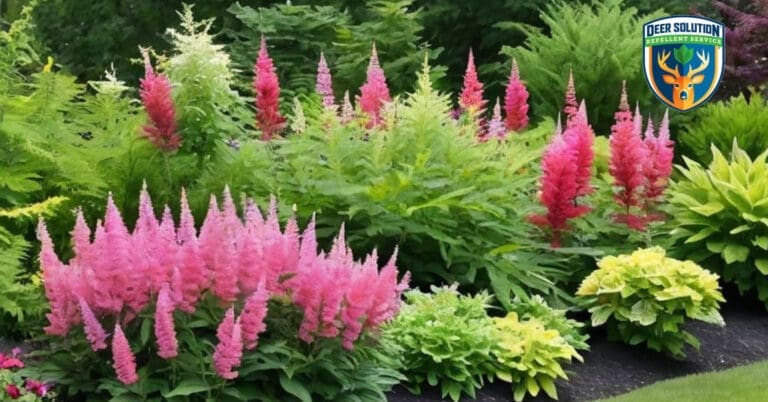Astilbes, with their feathery plumes and vibrant colors, are a beloved addition to many gardens. These perennials thrive in shady spots, where other flowering plants may struggle. Their lush foliage and striking flower spikes add texture and depth to garden designs, making them a favorite among both novice and experienced gardeners. However, for those living in areas with deer populations, the question of whether these delicate flowers are deer-resistant often arises. While deer may occasionally nibble on astilbes, these plants are generally considered relatively deer-resistant. This characteristic makes them a suitable choice for gardens prone to deer visitation, as they are less likely to be severely damaged or destroyed by these foraging animals.
Understanding Deer Behavior
Deer have a varied diet that includes a wide range of plants, shrubs, and flowers. These animals are browsers by nature, and their preferences often depend on the availability of food sources and the season. While some plants are more likely to be nibbled on, others tend to be less appealing to these grazers. Factors such as plant texture, taste, and the presence of certain chemicals can influence a deer’s inclination to feed on them.
Are Astilbes Deer-Resistant?
Astilbes are generally considered to be deer-resistant. This means that while deer may occasionally sample them, they are not typically a preferred food source. The texture and taste of Astilbes are not particularly appealing to deer, making them a safer choice for gardens in areas with high deer activity. However, it’s important to note that no plant is completely deer-proof. Hungry deer in search of food might still decide to taste your Astilbes, especially if their preferred food sources are scarce.
Enhancing Your Garden’s Deer Resistance
While Astilbes are less likely to be eaten by deer, integrating them into a comprehensive garden design can further enhance their resistance. Here are some tips:
Plant in Groups: Grouping deer-resistant plants together can create a more formidable barrier against deer. This strategy can also provide a more impactful visual display in the garden.
Use Companion Planting: Combine Astilbes with other deer-resistant plants to create a diverse and resilient garden. Companion planting can also help to improve soil health and deter pests.
Maintain Healthy Plants: Healthy plants are less attractive to deer. Regular watering, mulching, and fertilizing can keep your Astilbes in top condition, reducing the likelihood of them becoming a target for deer.
Professional Help for Persistent Deer Problems
For those facing persistent deer issues, professional services can offer valuable support. Deer Solution specializes in providing an all-natural repellent service designed to help mitigate deer damage. Our approach is grounded in eco-friendly practices, ensuring the safety of your family, pets, and the environment. By using natural ingredients that deer find unpalatable, we can discourage them from feasting on your garden without causing harm to the local ecosystem.
Fostering a Deer-Resistant Landscape
Addressing deer-related landscape challenges can seem daunting, but exploring sustainable solutions is key. Professional services like those offered by Deer Solution provide tailored support for maintaining the health and beauty of your landscape. With our help, you can enjoy a thriving garden that coexists peacefully with local wildlife.








